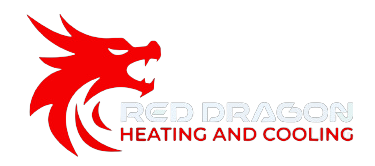Ultimate Guide to Choosing a New Heating System Installation in Johnstown
Understanding Your Heating Options
When it comes to heating your home, several system types offer distinct advantages. Understanding these options helps you make the best choice for your specific situation and budget.
Furnace Systems
Gas furnaces remain the most popular choice for many homeowners due to their reliability and efficiency. Modern high-efficiency furnaces can achieve Annual Fuel Utilization Efficiency (AFUE) ratings of 90% or higher, meaning they convert most of the fuel into usable heat.
Electric furnaces provide clean operation without requiring gas lines, making them suitable for homes without natural gas access. While operating costs may be higher in some regions, they offer excellent safety and require minimal maintenance.
Boiler Systems
Boilers heat water or create steam to distribute warmth throughout your home via radiators or radiant floor systems. They provide consistent, comfortable heat and work exceptionally well in older homes with existing radiator systems.
Modern condensing boilers achieve impressive efficiency ratings while providing zone control capabilities. This allows you to heat specific areas of your home as needed, potentially reducing energy costs.
Heat Pump Technology
Heat pumps offer both heating and cooling capabilities in a single system. Air-source heat pumps extract heat from outdoor air, while ground-source (geothermal) systems use stable underground temperatures for exceptional efficiency.
Mini-split heat pumps provide flexible installation options and excellent zone control. They work particularly well for home additions, converted spaces, or areas where traditional ductwork installation proves challenging.
Sizing Your Heating System Correctly
Proper system sizing ensures optimal comfort and efficiency. An oversized system cycles on and off frequently, wasting energy and creating temperature fluctuations. An undersized system struggles to maintain comfortable temperatures during extreme weather.
Professional load calculations consider multiple factors including home square footage, insulation levels, window types, ceiling heights, and local climate conditions. These calculations determine the precise heating capacity needed for your specific home.
Factors Affecting System Size
- Home square footage and room layout
- Insulation quality in walls, attic, and basement
- Window quantity, size, and energy efficiency
- Air leakage and overall home tightness
- Local climate and typical winter temperatures
- Ceiling heights and architectural features
Energy Efficiency Considerations
High-efficiency heating systems cost more upfront but provide significant long-term savings through reduced energy consumption. Understanding efficiency ratings helps you evaluate the true cost of ownership over the system’s lifespan.
Efficiency Ratings Explained
AFUE ratings measure furnace and boiler efficiency, with higher percentages indicating better performance. ENERGY STAR certified systems meet strict efficiency guidelines and often qualify for utility rebates or tax credits.
Heat pump efficiency uses Heating Seasonal Performance Factor (HSPF) ratings. Higher HSPF numbers indicate better seasonal efficiency, with modern systems achieving ratings of 8.5 or higher.
Installation Requirements and Considerations
Successful heating system installation requires careful planning and professional expertise. Understanding installation requirements helps you prepare for the process and avoid potential complications.
Ductwork Assessment
Existing ductwork must be evaluated for compatibility with your new system. Older ducts may require sealing, insulation improvements, or complete replacement to achieve optimal performance.
Proper duct sizing ensures adequate airflow throughout your home. Undersized ducts restrict airflow, reducing system efficiency and comfort. Professional duct design considers room heating loads and system specifications.
Electrical and Gas Requirements
New heating systems may require electrical upgrades to handle increased power demands. High-efficiency furnaces typically need dedicated electrical circuits for advanced controls and variable-speed motors.
Gas line sizing must accommodate your new system’s input requirements. Upgrading to a higher-capacity furnace may necessitate larger gas lines to ensure adequate fuel supply.
Cost Factors and Budget Planning
Heating system costs vary significantly based on system type, efficiency level, and installation complexity. Understanding these factors helps you budget appropriately and make informed decisions.
Equipment Costs
Basic efficiency systems cost less initially but may result in higher operating expenses over time. High-efficiency models require larger upfront investments but provide substantial long-term savings through reduced energy consumption.
Premium features like variable-speed motors, advanced controls, and zone capabilities increase initial costs while improving comfort and efficiency. Consider these features as investments in long-term satisfaction and energy savings.
Installation Expenses
Installation costs depend on system complexity, existing infrastructure, and any necessary modifications. Simple replacements cost less than installations requiring ductwork changes or electrical upgrades.
Permit fees, inspection costs, and potential structural modifications add to total project expenses. Professional contractors provide detailed estimates covering all aspects of your installation project.
Maintenance and Longevity
Regular maintenance extends system lifespan and maintains peak efficiency. Understanding maintenance requirements helps you protect your investment and ensure reliable operation.
Preventive Maintenance Tasks
- Regular filter changes to maintain airflow and indoor air quality
- Annual professional inspections and tune-ups
- Cleaning and adjusting system components
- Monitoring system performance and addressing issues promptly
- Keeping outdoor units clear of debris and vegetation
Professional maintenance services identify potential problems before they cause system failures. Regular tune-ups optimize performance, improve efficiency, and extend equipment lifespan significantly.
Making Your Final Decision
Choosing the right heating system requires balancing multiple factors including initial cost, operating expenses, comfort preferences, and long-term reliability. Consider your specific needs and consult with qualified professionals to make the best choice.
Evaluate contractor credentials, warranties, and service capabilities when selecting an installation company. Quality installation proves just as important as equipment selection for achieving optimal system performance and longevity.
The ENERGY STAR website provides valuable information about efficient heating systems and available rebates to help reduce installation costs.
Remember that the lowest-priced option rarely provides the best long-term value. Focus on total cost of ownership, including purchase price, installation expenses, operating costs, and expected lifespan when making your final decision.
